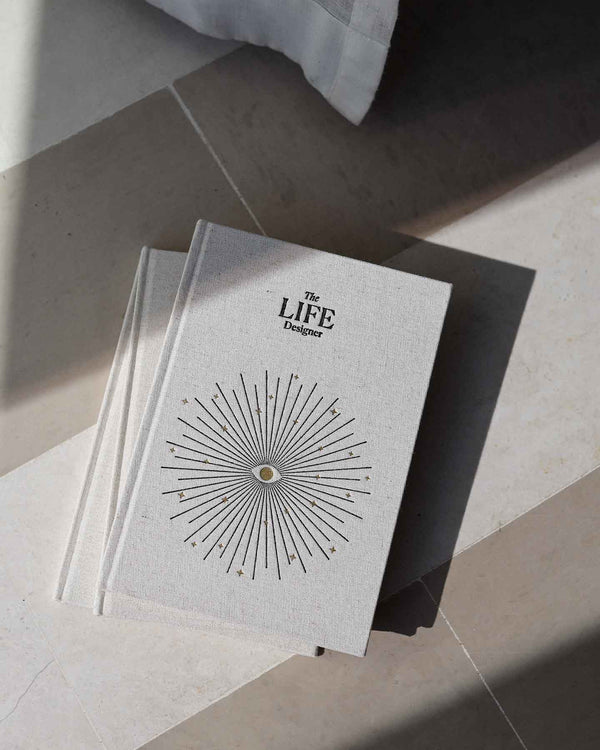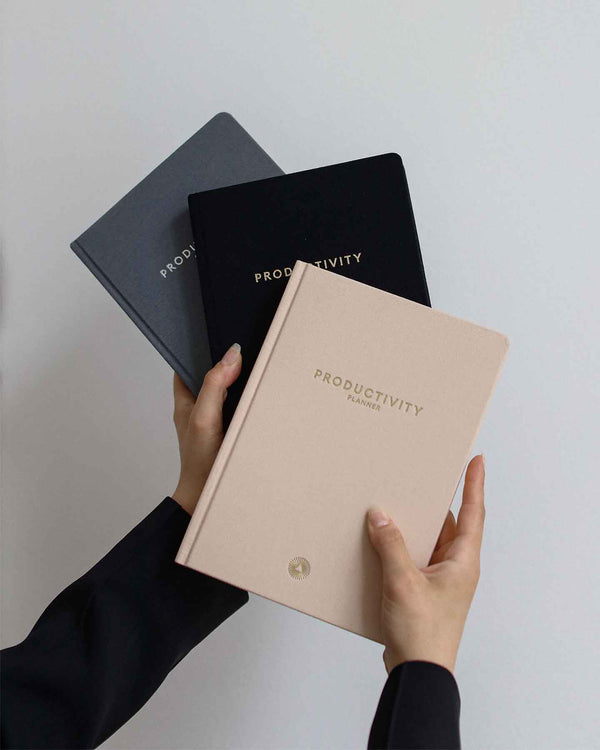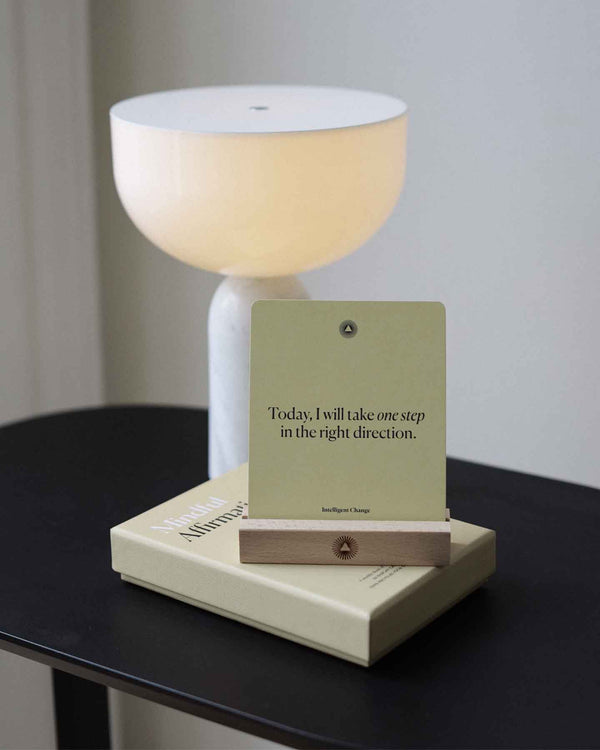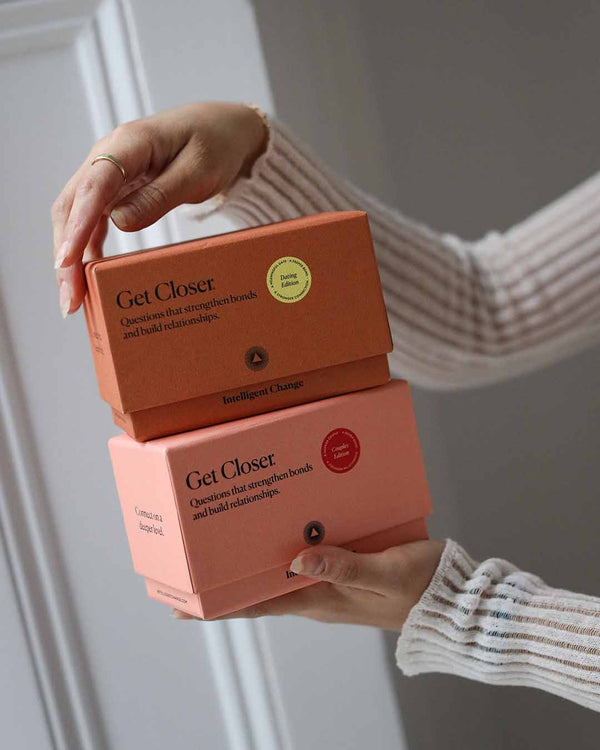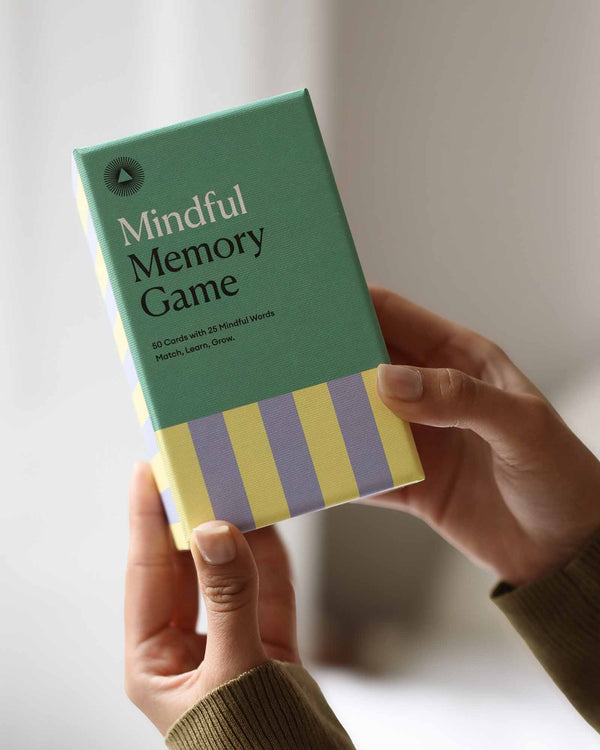How to Be Happy
by Intelligent Change
What makes you happy?
Behavioral scientists and philosophers have dedicated a fair share of their efforts to discovering and explaining the most desired emotion among humans: happiness.
And while some human beings are perfectly clear on what makes them happy, some of us still struggle to answer this most essential of questions.
Some philosophers like Aristotle even went so far as to claim that happiness is the ultimate purpose of human life. According to the Greek philosopher, everything we do has one final goal: to make us happy. However, short-term happiness is not the same as living a happy life.
We know that happy people tend to be healthier, live longer, and have a wealthy social life. So, how do we become happy? Where does happiness come from? What is happiness?
What Is Happiness?
Since the emergence of positive psychology, a lot of research has been conducted about happiness, life quality, optimism, and their shaping factors.
Researchers like Robert Emmons, Michael McCullough, Martin Seligman, and many others have given us a comprehensive picture of what it means to be happy and what it takes to become happy.
According to Sonya Lybomirsky, “happiness is the experience of joy, contentment, or positive well-being, combined with a sense that one’s life is good, meaningful, and worthwhile”.
Happiness doesn’t simply happen to us, although it can, of course, be accidental at times. We all have the power to take control over our behavior, environment, relationships, and habits, and set ourselves on the course for living a happy life. Here’s how.
The Inner World
Happiness comes from within. Its main source is in our mind and soul. While negative thoughts and emotions are a normal part of life, it’s possible to keep them under control and live an optimistic and balanced life.
Deal With Negative Thinking
Thanks to millennia of evolutionary adaptation to life in dangerous environments, we’ve developed a mechanism called “the negativity bias”, a fancy term for our tendency to focus and care about negative information and experiences more compared to neutral or positive ones.
This means that we need to put in a little extra effort into reversing our negativity bias and conquering our negative thoughts.
Embrace Your Negative Thoughts
Forcing yourself to turn off your mind’s negative frequencies at all costs can only result in making things worse. Negative thoughts are there for a reason and, instead of silencing and numbing them, it’s much more efficient to own, question, and understand your thoughts better.
This approach is what we call a proactive approach to life, in contrast to a reactive approach. Instead of waiting for things to happen to you, or waiting for them to go away, you take ownership of your life and actively engage.
Question and Name Your Problem Areas
Several decades ago, cognitive-behavioral therapists started implementing the Socratic dialogue in their therapeutic techniques. Asking questions, analyzing, and naming the problem is the broad outline of the purpose of this dialogue.
Based on the idea that we tend to blame external factors for our negative emotions, Albert Elis, the founder of cognitive-behavioral therapy, has developed the ABC diagnostic theory:
A: activating event that triggered the negative emotion.
B: our beliefs about what happened in the event.
C: consequence: the emotional or behavioral response to that event.
Following this simple scheme allows you to identify the origins of your negative thoughts and emotions, analyze your opinion about them, and understand your emotional reactions better.
The key is to maintain Socratic dialogue throughout the process and challenge your own beliefs over certain emotionally loaded events. This is how we question our irrationality.
Let’s look at these examples:
- I am upset because I didn’t receive person X’s approval. (A)
- Do I need this person's approval to feel good? Why do I want their approval? (B)
- I can’t think, sleep, nor be productive after event X. (A)
Is it necessary for me to be miserable over event X, or can I just be moderately annoyed? (B)
Be Gentle With the “Negative You”
Although disputing your irrational beliefs is a desirable way of combating them, keep in mind that you’re doing this to become more positive. Don’t torture yourself with inner debates over why and how something happened. Nurture yourself as a loving friend would and practice self-compassion. These are the first steps to fully embracing your inner self and finding happiness through self-love.
Practice Gratitude and Strive Towards a Positive Mindset
Appreciating the life you have, thanking your life-long friends and family for being an important part of your life, or keeping a gratitude journal are all excellent ways of combating negativity bias.
Gratitude helps us discover the good in every situation, no matter how difficult life gets. Sometimes, all it takes to make our day is a smile, a nice word, or a kind gesture.
Apart from the fact that it helps us see our lives in a more positive light, gratitude has a number of other benefits, including better physical and mental health, balanced sleep, improved relationships, and so on. It’s the healthiest way to achieve a positive mindset, a logic-based approach to life colored with optimism and curiosity.
Keeping a gratitude journal is perhaps the most efficient and simplest method of practicing gratitude. It provides consistency, structure, and guidance. We’ve designed The Five Minute Journal to make your gratitude experience as creative and powerful as possible.
A gratitude journal is a toothbrush for your mind. With it, you can dedicate five minutes every morning and evening to reflect on the good things in your life and maintain your mental hygiene on a commendable level.
Implement Mindfulness in Your Daily Life
Presence in the here and now, consciousness, and focus are ancient practices that positive psychology, life coaching, and the modern, more humanistic approach to human nature have brought back to life.
Meditation, breathing exercises, and routines can reduce anxiety, improve our sleep and mood, and helps us be more attentive.
Becoming more conscious in everyday life means practicing mindfulness in baby steps. It’s possible to be more present in the now and mindful in all sorts of day-to-day situations: eating, talking to friends, spending time outside, taking care of yourself, spending your mornings and evenings, and so much more.
We can also make our workplace a more mindful place by organizing our time properly, maintaining enthusiasm and energy, making room for meditation, breathing exercises, and discovering personal growth activities.
Adopt a Growth Mindset
All human beings weave personal narratives based on previous experiences, parental messages, or beliefs acquired along the way. These narratives form our mindsets: mental configurations that shape how we feel and act in a variety of situations.
One such mental configuration we find particularly important is the difference between a fixed and a growth mindset.
In a fixed mindset, there’s a belief that skills, intelligence, and opportunities in life are predetermined, and changing them makes no sense. Mistakes, failures, challenges, and risks can all be major sources of frustration and unhappiness.
The growth mindset, on the other hand, implies life-long learning and change. People with a growth mindset see risks and challenges as opportunities for growth and happiness. They perceive obstacles and failures as valuable lessons and keep moving forward through life with intention and an optimistic attitude.
Physical Activity: A Cure as Old as Time
Running, walking, dancing, stretching, shooting hoops, jumping rope, playing squash: physical activity is a major source of happiness. Study after study is showing that as little as 10 minutes of physical activity per day can raise our endorphin and serotonin levels, enhancing our mood.
Of course, this is the standard chicken vs egg dilemma, as it’s hard to find out whether happy people tend to be more physically active, or physical activity boosts happiness. Either way, they go hand-in-hand. Try going for a mindful walk every morning or after lunch, and notice how it makes you feel.
The Outside World

While taking care of your inner world is crucial for achieving happiness, external factors also shape the way we think and feel about life.
People differ in the extent to which they let external factors influence their overall happiness, as well as in the extent to which they’re able to control their environments and their reactions to it.
The cookie-cutter principle doesn’t work for happiness: some human beings find it incredibly hard to maintain an optimistic approach when their external conditions are extremely challenging.
For several decades, social scientists have been researching what external factors affect human happiness, and it turns out that financial stability, meaningful relationships with other people, and education, together with self-development, seem to be the pillars.
There are also demographics and local politics, housing quality, job satisfaction, and so on.
Design Your Happy Environment
Where you’re born plays a major role in how easy it will be for you to create your happy space. According to the World Happiness Report, the top 3 happiest countries are Finland, Denmark, and Norway.
According to that same report, the least happy countries are Palestine and Yemen.
The most important country-wise factors that shape citizen’s happiness are life expectancy, social support, social freedom, generosity, corruption, and GDP.
While there might be no way to change any of these external factors for the better, there’s something we can do and learn:
- Be grateful for what you have in life: acknowledge people who support you, material assets that help you achieve your dreams, and opportunities that you can create;
- Find work that you enjoy doing and transform it into a well-paying job – this way you can focus on your happiness, but avoid allowing the quest for money to become your main preoccupation;
- Surround yourself with people with whom you share mutual love, vision, and support. Even if your surroundings are not strong on the “social support” factor, you can create it yourself;
- Take care of your health, both physical and emotional: exercise regularly, spend time in nature, eat healthily, and create grounding routines that help you gain clarity and unwind when necessary.
Be a Part of a Community
Humans have been living in communities since the dawn of time. Although the meaning of this term changes with the zeitgeist, the need to belong to a group has always been intrinsically connected to what it means to be a human.
However, according to a variety of scientific studies, some communities’ inhabitants seem to be happier than others.
The main differences revolve around three things: openness, aesthetics, and socialization. People living in open communities that nurture diversity and welcome everyone are happier than those living in closed communities. The aesthetics of the neighborhood you live in play a major role in happiness levels, as people like greenery and orderliness. Finally, communities with accessible public places like restaurants, movies, and parks have happier inhabitants than those without.
If the neighborhood you live in doesn’t satisfy any of these criteria, perhaps it’s time to consider moving. Whether or not you can freely walk, hang out, or go out in your neighborhood can be a crucial happiness factor.
Tidy Up Your Personal Space
Whether you live in a shared flat or have the apartment to yourself, the state of your living space usually reflects your inner state.
How can someone be happy living in a pile of unnecessary, dust-collecting clutter?
You don’t need money to make your home your oasis of peace and happiness. It’s not the shiny new furniture or tacky decorations that make home a cozy and safe place. It’s your efforts to make it clean, tidy, and yours.
Excessive clutter can be a major source of stress, as it makes it hard to focus and be productive at home. Letting go of stuff you don’t need anymore can have a relieving effect on your psyche.
Adapt a minimalistic approach to decluttering and take these steps to make your home a happier place:
- Give away stuff you don’t use;
- Box up things you don’t use, but would love to have around;
- Sort your winter and summer clothes and make room in your closet;
- Stop mindlessly buying things that collect dust.
Create a Corner Just for Yourself
We all need a place we consider our “happy place”. Of course, like we previously said, keeping your home neat is beneficial for your mental well-being, but, while we’re at it, how about a corner reserved for pleasure and relaxation? A space filled with joy and an atmosphere of gratitude?
This is particularly important if you don’t live alone.
For some people, that place is the bedroom, so they equip it with nice and comfortable sheets, lamps, cushions, curtains, whatever makes them feel cozy and relaxed.
Of course, your “happy place” doesn’t have to be the bedroom. A living room couch or a cozy armchair, a soft blanket, and a dim lamp should do the trick as well. Maybe, your “happy place” is a kitchen, and you fill it with your favorite one-of-a-kind mugs, plants, and colorful plates. Maybe it’s a reading nook, a yoga or meditation corner, or a bathroom that helps you relax and unwind.
The goal is to feel safe and happy.
Relationships and Personal Habits: Where the Outside and Inner World Meet
Paying special attention to your living and working space, along with fostering a positive mindset and learning how to deal with negative thoughts can have a huge impact on our sense of well-being and overall happiness.
Yet, there’s more to happiness than ourselves: other human beings.
We mentioned already that belonging to some kind of community is important because happiness depends on our sense of connectedness to other people and the world as a whole.
Nurture Relationships With Your Loved Ones
While the number of close social relationships can make a difference in our happiness levels, the quality of those relationships is much more important.
A 2003 study revealed that satisfyingly married middle-aged women were under a lower risk of getting ill from cardiovascular diseases.
Supportive relationships motivate us to live healthier lives. They give us encouragement, support, and security: good mental health and overall happiness essentials.
All this lowers our body’s stress response because, even when life hits hard, we know we’re not alone.
Make sure to spend time with your loved ones in a meaningful way: go out in nature, take road trips together, prepare food and eat together, practice gratitude and never miss an opportunity to have deep conversations about your feelings, experiences and relationships.
Daily Habits
Sometimes it takes very little for us to feel grounded and calm, which is the precursor to (and for some equals) happiness.
Our brains enjoy routines and rituals: they provide us with security and predictability.
That’s why instilling a simple morning routine geared towards enhancing your daily productivity and healthy habits can help you balance your mood and make you feel happier over a longer period of time.
The founders of the Intelligent Change brand, Alex and Mimi Ikonn designed their morning routine around healthy habits and gratitude: they fill their morning with energy and, at the same time, slow and mindful approach – they work stretch in the morning, fill out their Five Minute Journals, and prepare a healthy breakfast together.
Evening routines, on the other hand, should be geared towards recapping our day and preparing our mind and body for a nice rest.
Taking a walk around the neighborhood, going out for dinner, meditating, having relaxing tea, preparing your space for healthy sleep – these could be some of the activities you could implement in your evening routine.
Many of these activities are much more fun when shared with people you love: meals, reading time, even beauty rituals can get more interesting if you do them as a couple or as a family.
Fun and Hobbies
Last but not least: make room in your schedule for fun and hobbies. No matter how thick your schedule is, it’s important that you leave room for things you enjoy the most.
Whether it’s playing tennis, painting, or spending time in nature with your dog, make sure you incorporate into your routine the activities that make you feel fresh and that you consider fun.
Hobbies give us the opportunity to live a more enhanced life, distress, relax, and simply enjoy the pleasure of participating in activities we personally find fun and satisfying.
Over and Out…
Even if you’re not yet sure what your happiness exactly is, by following these simple steps you might get closer to finding out.
While each and every one of us is a unique combination of personality traits, character, and personal background, there are certain universal factors that influence our happiness levels.
Overcoming negative thoughts, connecting to others, or tidying up your personal space can do miracles for our well-being.
For most of us, happiness is not a given. It’s a long road we need to take before we learn how to be happy.





